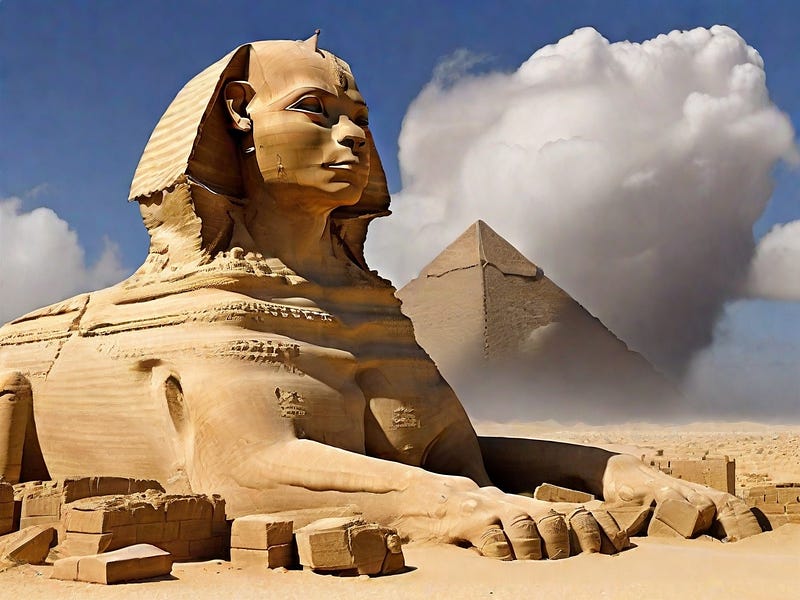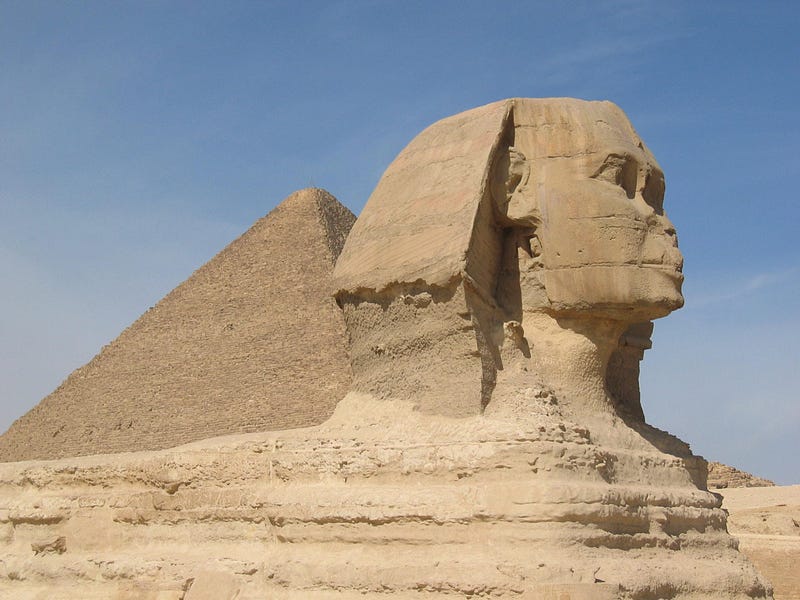The Wind's Role in Shaping the Great Sphinx: A Deep Dive
Written on
Chapter 1: The Great Sphinx and Its Origins
The Great Sphinx, located on the Giza Plateau alongside the Pyramid of Cheops, stands as one of the most iconic ancient sculptures. Researchers have uncovered the reasoning behind its creation, revealing the significant impact of wind on this monumental work.

This colossal statue features a lion's body with a human head and was meticulously carved from a limestone formation approximately 4,500 years ago. It stretches 73 meters in length and rises to 20 meters in height. Scholars remain divided over its commissioning; the most widely accepted theory attributes it to Pharaoh Khafre (Chefren), whose pyramid is in close proximity, while others suggest it was ordered by Pharaoh Khufu (Cheops), the architect of the largest pyramid in Egypt.
Section 1.1: The Role of Wind in Sculpting the Sphinx
To uncover the original state of the limestone outcrop from which the Sphinx was chiseled, a group of scientists from New York University embarked on a study. They recreated the ancient conditions of the Giza Plateau, demonstrating how wind erosion shaped the rock formations.
“Our research offers a plausible narrative regarding how erosion could lead to the formation of shapes akin to the Sphinx,” noted Professor Leif Ristroph from the Courant Institute of Mathematical Sciences at NYU. His team's findings are set to be published in the esteemed journal “Physical Review Fluids.”
Subsection 1.1.1: Experimental Insights
The experiments revealed that formations strikingly similar to the Sphinx can emerge from wind-driven erosion. The research primarily focused on yardangs—distinctive rock structures shaped by wind and sand. The scientists hypothesized that the limestone formation that became the Sphinx might have been a yardang.
By creating models of soft clay mounds and overlaying them with a harder material, the researchers mimicked the terrain of northeastern Egypt. These models were subjected to rapid water flow to simulate the wind's sculpting action. The varied erosion rates among different rock types resulted in the formation of the Sphinx's head and body, allowing nature to aid the ancient Egyptians in their monumental task.

Section 1.2: Nature's Sculpting Hand
Natural erosion has created similarly shaped rock formations worldwide. For instance, the White Desert in Egypt features unique rock outcrops that resemble various objects, drawing tourists from afar.
“Our findings provide a clear explanation of how such formations can result from natural erosion processes,” Ristroph concluded.
Chapter 2: The Sphinx's Enigmatic Features
This video delves into the origins of the Sphinx, highlighting its first excavation in modern history and the fascinating insights gained from these explorations.
The head of the Sphinx, which represents a pharaoh, appears disproportionately small compared to its massive body, a mystery that remains unresolved. It's possible that the head was recarved at some point, altering its original likeness.
Although the Sphinx is believed to be around 4,500 years old, its purpose continues to baffle historians. The term "sphinx," derived from the ancient Egyptian "shesep-anch," translates to "living image," leading Egyptologists to ponder whether the statue represents a specific pharaoh or perhaps a deity.
This video presents a new hypothesis regarding the origins of the Great Sphinx, questioning existing theories and examining the evidence behind these claims.
Attention all readers!
As a content creator on Medium.com, I receive minimal compensation for my efforts. If you appreciate my articles, please consider supporting me on my “Buy Me a Coffee” page. Your contributions can significantly impact my ability to produce quality content. Thank you for your support!
